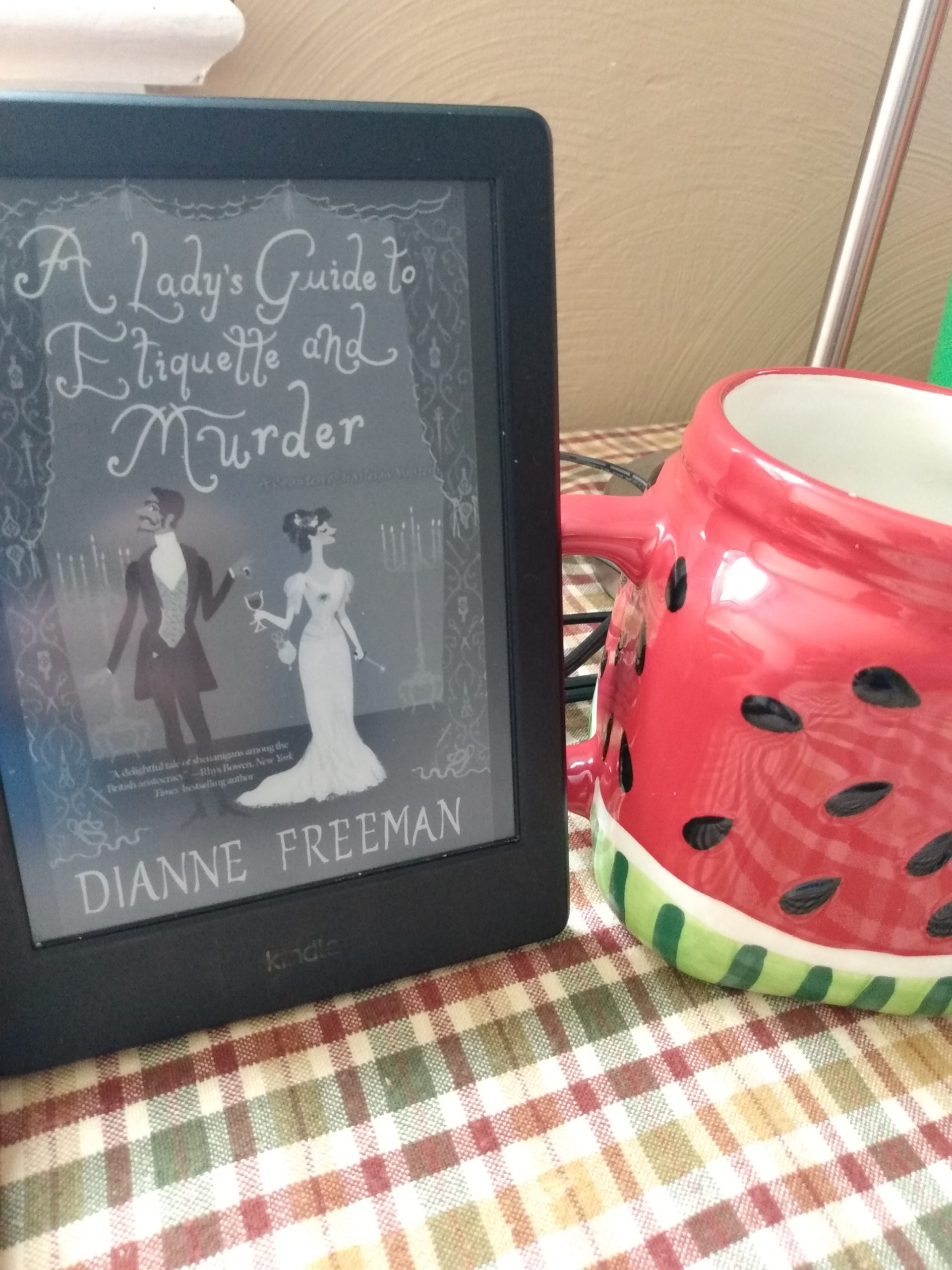A Lady’s Guide to Etiquette and Murder was published in 2018, and it has the plot flow of a more modern historical mystery book (you can kind of get a feel for which books have been written in 2000 or later, due to their action sequences, terminology, romantic interests, etc.). This novel was thoroughly captivating and entertaining, and will appeal to today’s audience .
Lady Harleigh, also known as Frances Wynn, is on the edge of freedom. With her mourning period for her husband over at last, she’s looking forward to getting out of his home, away from under his money-hungry family, and re-entering society on her own. Events, however, go from bad to worse as her money is frozen in a lawsuit, she moves next door to one of the two people who know her darkest secret, and relatives land in her new home with the expectation that she will introduce her sister into society. Oh, and her husband may have been murdered. As she seeks to resolve her own problems, she’s swept into other ones, such as uncovering a jewel thief – while battling the growing feelings she has for her neighbor. It’s a wild ride for Lady Harleigh as she tries to regain control of her newfound freedom.
One thing that stuck out the most to me during this book was Lady Harleigh’s reaction to the events that befell her. She lost her finances, was a suspect in the murder of her husband, found a stolen bracelet in her purse, and was forced to relive the night of her husband’s death over and over again. In the beginning of the book, her outlook was one of optimistic hope that she might get out from under her in-law’s control and back to leading her own life. When one thing after another went awry, she sort of folded in on herself, wanting someone else to just make her problems go away, as presumably her husband would have done if he were alive. It was a very real moment of weakness that I think we’ve all had, and I admired that Freeman made Lady Harleigh a realistic character in that regard. She’s not a hero that can just “get on with things,” she’s a human person that needs time to collect herself and her thoughts before she acts.
I also liked that Lady Harleigh was sensible, even though she was brought up as a rich American heiress who was only encouraged to marry, and marry well. She was determined to make it on her own and rejected the idea of another husband until she found the right man. She made a point of telling her sister that she shouldn’t feel she has to jump into marriage just because a man seems nice and attractive. It became clear throughout the book that Lady Harley is mindful of how differently her marriage progressed than her younger self imagined, and how much more independence she retains as a widow. Readers are able to look back on her past experiences with her and see why she has progressed to where she has, and how she’s used her experiences to become the sensible, sophisticated woman she is.
All-in-all, I found this book a delight. The characters were believable, the events made sense, and the ending had a plot twist that I most definitely didn’t see coming. I did foresee part of the plot about halfway through the book, but only because I’d read an uncannily similar feature not that long ago. The rest, however, was a total surprise. I wasn’t as into this novel as I am with Lady Emily, or Sebastian St. Cyr, but I will be looking to read the second one as the characters were so wonderfully introduced, the storyline well-played, and the hint of romance palpable. You can cuddle up for this book as it is 100% a cozy mystery.
